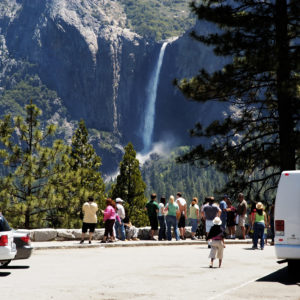Editor’s Note: For an alternative viewpoint, please see: Counterpoint: Don’t Kill the Endangered Species Act
Though written with the best of intentions, the Endangered Species Act has a fatal flaw that makes it both expensive and ineffective. To date, efforts to improve the law have tinkered around the edges without addressing this flaw.
Most people, including many critics of the law, agree that biodiversity protection benefits everyone. Yet the flaw in the law is that it often imposes all the costs of protection on a few people. Those forced to pay the costs end up resenting wildlife, while many of those who benefit without paying the costs themselves accuse the law’s critics of being selfish and short-sighted.
Imagine that we tried to use the same system to build the Interstate Highway System. The Bureau of Public Roads would draw lines on a map indicating where the roads would go. All private owners of the land crossed by the lines would be required to tear down any improvements and replace them, at their own expense, with a road meeting federal standards.
Just as very few miles of interstate highways would ever be built under such a system, few endangered species will easily be saved under the same type of system. Even where the roads (or endangered species) are on public lands, public land managers would resist the road construction mandate if it was unfunded, just as many resist the mandate to protect biodiversity.
There are two ways to fix this flaw. One is to create a multi-billion-dollar fund to pay people to protect endangered species and biodiversity. One way to raise money for this fund is to charge recreation fees at a fair-market value on public lands and dedicate a share of those fees to biodiversity.
The second solution is to allow people to own fish and wildlife. This is not as radical an idea as it sounds: under British common law, wildlife was owned by the owners of the land on which the wildlife resided. Fisheries could also be privately owned. Owners of fish and wildlife had incentives to protect their property from those who would overhunt or overfish them or harm their habitat.
This law created resentments because a handful of aristocrats owned nearly all the land in Britain. So Americans — not realizing that landownership here would end up being more evenly distributed — changed the common law in this country because they felt wildlife should belong to everyone, and not just the landowners.
This change in the common law doomed such species as the eastern elk, Merriam’s elk, and the passenger pigeon, all of which would probably survive today if landowners had an incentive to protect them. With the change, no one had any incentive to try to protect wildlife or fish from habitat destruction or overharvesting, and while the states had the authority to do so, they didn’t begin to exercise this authority until around 1900, and then only for huntable wildlife and fish.
We know private involvement can work because private groups greatly assisted in the recovery of the peregrine falcon. Despite this, the Fish and Wildlife Service has resisted the idea of private ownership to help recover other species. Yet private ownership of various strains of salmon, and such rare species as the black-footed ferret and Utah prairie dog would significantly increase their chances of survival.
Private ownership would work even for species that don’t have a direct economic value, as anyone who has been to a dog show should realize. Dog breed enthusiasts put enormous efforts into protecting their breeds even though it earns them nothing but a blue ribbon, and the admiration of their peers. Offering, say, a ribbon to anyone who successfully raises a black-footed ferret, and releases it into wild where it survives long enough to breed would harness that energy for endangered species, and go far toward restoring biodiversity.
Private ownership might not work for every species, so the best solution would be a combination of the two: use private ownership as much as possible, then a biodiversity fund out of recreation user fees as a fallback measure. Any changes to the Endangered Species Act that fail to address the fundamental flaw in the law will fail, and the best way to fix that flaw is to give people incentives and rewards for protecting species.

